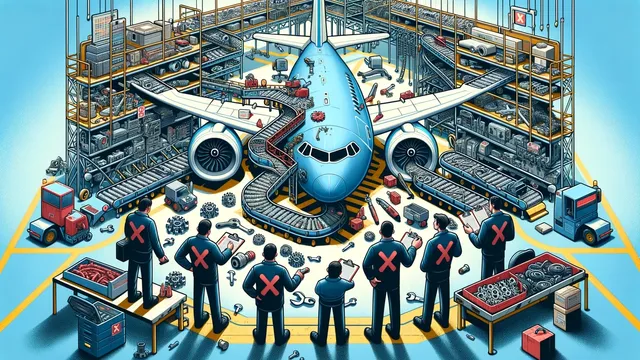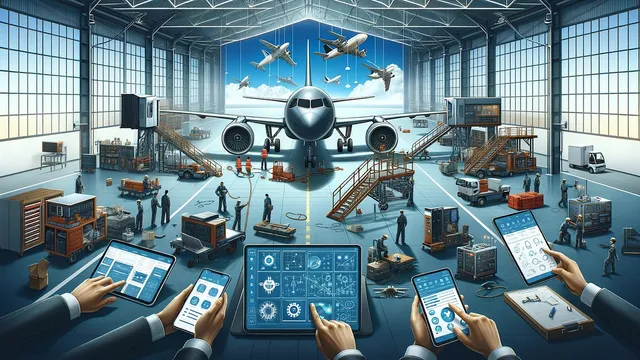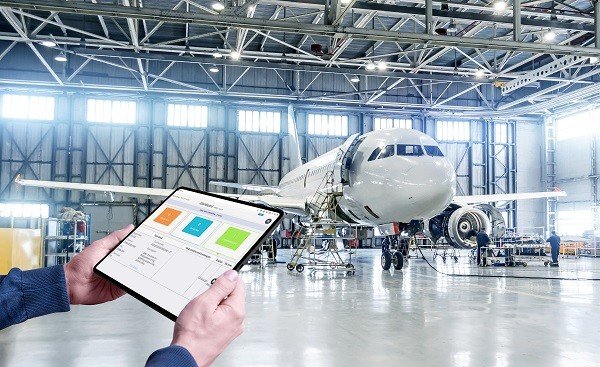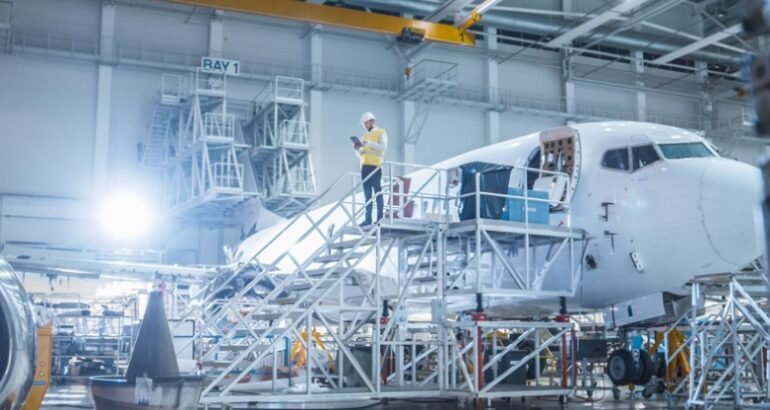Explore the intricacies of aircraft parts supply chain management, from the evolution of distribution methods to the challenges of ensuring quality and reliability. Discover the critical role of reliable aerospace components in maintaining flight safety and performance, and learn about the criteria for selecting the best suppliers in the aviation industry.
Introduction
- Overview of Aircraft Parts Supply Chain
- Summary: Explore the complexity and critical nature of the aircraft parts supply chain, emphasizing its importance in ensuring the safety, reliability, and efficiency of aviation operations.
- The Evolution of Aircraft Parts Distribution
- Summary: Discuss how aircraft parts distribution has evolved with advancements in technology and changes in the aviation industry, highlighting the shift towards digital platforms and online stores.
Challenges in Aircraft Parts Supply Chain
- Logistical Complexities
- Summary: Delve into the logistical challenges of managing a global supply chain, from transportation hurdles to regulatory compliance.
- Quality Assurance and Certification
- Summary: Examine the rigorous standards required for aerospace components, focusing on the processes for quality assurance and the importance of certification.
The Role of Reliable Aerospace Components
- Ensuring Flight Safety and Performance
- Summary: Discuss how the reliability of aerospace components is paramount to flight safety and overall aircraft performance.
- Vendor Selection and Evaluation
- Summary: Offer insights into the criteria for selecting vendors and evaluating their capabilities to supply dependable components.
Innovations in Aircraft Parts Distribution
- Adoption of Digital Platforms
- Summary: Explore how online aircraft parts stores and digital platforms are transforming the distribution landscape, making it more efficient and accessible.
- Blockchain and AI in Supply Chain Management
- Summary: Introduce cutting-edge technologies like blockchain and AI, explaining their potential to revolutionize supply chain transparency and efficiency.
Strategies for Managing Airplane Spare Parts Inventory
- Inventory Optimization Techniques
- Summary: Provide strategies for optimizing spare parts inventory, reducing costs while ensuring parts availability.
- Leveraging Data Analytics
- Summary: Highlight how data analytics can be used to predict parts demand, manage stock levels, and streamline operations.
Conclusion
- Future Trends in Aircraft Parts Supply Chain
- Summary: Conclude with a look at emerging trends and how they might shape the future of aircraft parts supply chain management, emphasizing the ongoing need for innovation and adaptability.
Innovations in Aircraft Parts Supply Distribution

Adoption of Digital Platforms
The digital transformation within the aircraft parts supply chain has significantly streamlined the distribution process. Online aircraft parts stores have emerged as a pivotal innovation, offering unparalleled access to a global inventory of parts. These platforms facilitate faster transactions, improved transparency, and enhanced customer service, making it easier for airlines and maintenance providers to source the right components quickly. Digitalization has not only improved efficiency but also introduced a level of agility into the supply chain, enabling the industry to respond more swiftly to market changes and operational demands.
Impact of Blockchain on Aircraft Parts Supply Chain Transparency
Blockchain technology is set to revolutionize the aircraft parts supply chain by enhancing transparency and security. By enabling a decentralized and immutable ledger of transactions, blockchain provides a verifiable and tamper-proof record of the lifecycle of each part. This technology can significantly reduce the risk of counterfeit parts entering the supply chain, ensuring that only certified and genuine components are used. Furthermore, blockchain facilitates better tracking of parts, from manufacture to installation, improving logistics management and regulatory compliance.
Leveraging AI for Supply Chain Efficiency
Artificial Intelligence (AI) is another groundbreaking innovation reshaping the aircraft parts supply chain. AI algorithms can predict maintenance needs, optimize inventory levels, and streamline logistics, reducing downtime and operational costs. By analyzing vast amounts of data, AI helps in making informed decisions regarding parts procurement and inventory management. This proactive approach to maintenance and supply chain management ensures that aircraft remain operational, minimizing delays and maximizing efficiency.
FAQs
- How do digital platforms benefit aircraft parts distribution?
- Digital platforms offer faster transactions, global access to parts, and improved efficiency in the supply chain.
- What role does blockchain play in the supply chain?
- Blockchain enhances transparency and security, reducing the risk of counterfeit parts and improving regulatory compliance.
- How can AI improve supply chain efficiency?
- AI predicts maintenance needs, optimizes inventory, and streamlines logistics, reducing operational costs and downtime.
Strategies for Managing Airplane Spare Parts Inventory

Inventory Optimization Techniques
Effective inventory management is crucial for maintaining the readiness and reliability of aircraft. Optimization techniques, such as Just-In-Time (JIT) inventory and predictive analytics, play a significant role in ensuring that the right parts are available when needed, without the burden of excessive stock. JIT inventory reduces storage costs and minimizes the risk of obsolescence, while predictive analytics helps in forecasting demand, preventing both shortages and surpluses. These strategies contribute to a leaner, more efficient supply chain, crucial for the fast-paced aviation industry.
The Role of Data Analytics in Demand Forecasting
Data analytics has become an indispensable tool for forecasting demand in the aircraft parts supply chain. By analyzing historical data, maintenance records, and flight schedules, airlines can predict which parts are likely to be needed and when. This foresight allows for better planning and procurement strategies, ensuring that parts are available for scheduled maintenance and unexpected repairs. Data-driven decision-making leads to more efficient operations, reducing aircraft downtime and improving service reliability.
Enhancing Aircraft Parts Supply Chain Responsiveness
A responsive supply chain is key to addressing the dynamic needs of the aviation industry. Flexibility in procurement and logistics, enabled by advanced technologies and strategic partnerships, allows airlines and suppliers to adapt quickly to changing demands. This agility is essential for managing unforeseen challenges, such as sudden spikes in demand or supply chain disruptions. By fostering a culture of innovation and collaboration, the industry can enhance its supply chain responsiveness, ensuring continuous operation and customer satisfaction.
FAQs
- What is JIT inventory, and how does it help?
- JIT inventory minimizes stock levels and storage costs, ensuring parts are available just in time for maintenance or repairs.
- How does data analytics aid in demand forecasting?
- It analyzes historical data and maintenance records to predict future parts needs, improving planning and procurement.
- Why is supply chain responsiveness important?
- It allows for quick adaptation to changing demands or disruptions, ensuring continuous operation and customer satisfaction.
Conclusion and Future Trends in Aircraft Parts Supply

The Continuous Evolution of the Aircraft Parts Supply Chain
The aircraft parts supply chain is in a state of continuous evolution, driven by technological advancements and changing industry needs. As the demand for air travel grows, so does the need for an efficient, reliable supply chain. The future will likely see further integration of digital technologies, such as IoT devices for real-time tracking and blockchain for enhanced security. These innovations will further streamline operations, reduce costs, and improve the overall reliability of the supply chain.
Anticipating the Impact of Emerging Technologies
Emerging technologies, including 3D printing and advanced materials, are set to have a profound impact on the aircraft parts supply chain. 3D printing, or additive manufacturing, offers the potential for on-demand production of parts, significantly reducing lead times and inventory requirements. Advanced materials, such as composites, promise to extend the lifespan of parts and reduce maintenance needs. These technologies will require the supply chain to adapt, offering new opportunities for efficiency and innovation.
Preparing for a Sustainable Future
Sustainability is becoming an increasingly important consideration in the aircraft parts supply chain. Efforts to reduce the environmental impact of aviation are leading to the adoption of greener practices, from recycling parts to optimizing logistics for lower emissions. As the industry moves towards a more sustainable future, the supply chain will play a crucial role in implementing these practices, balancing operational efficiency with environmental responsibility.
FAQs
- How is the aircraft parts supply chain evolving?
- It’s becoming more integrated with digital technologies for improved efficiency, security, and reliability.
- What impact will emerging technologies have on the supply chain?
- Technologies like 3D printing and advanced materials will revolutionize parts production and maintenance, requiring adaptation.
- How is sustainability being addressed in the supply chain?
- Through greener practices, such as recycling parts and optimizing logistics, to reduce the environmental impact of aviation.
